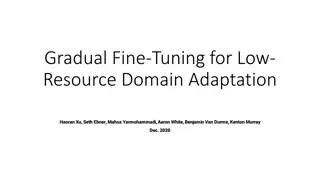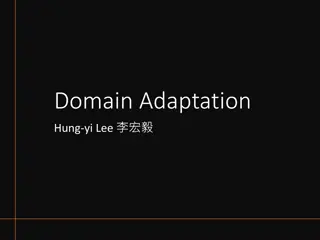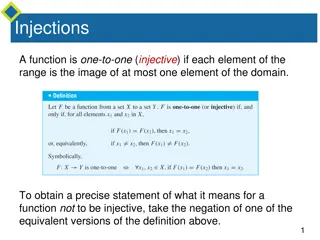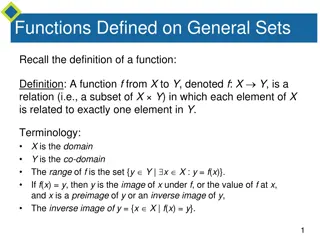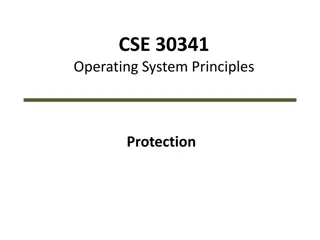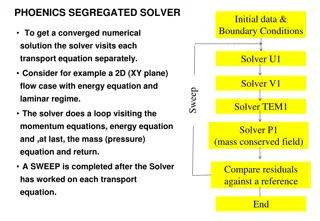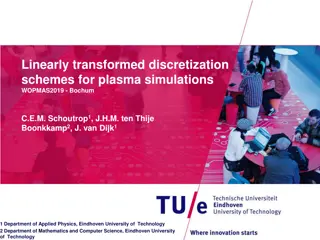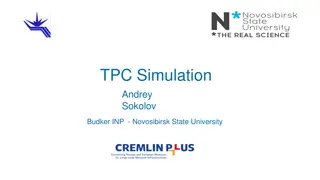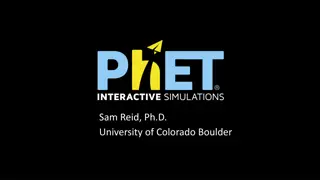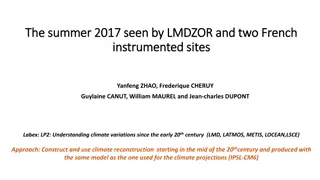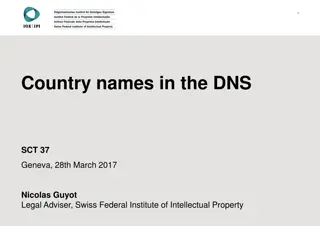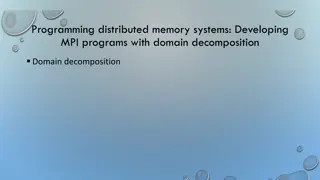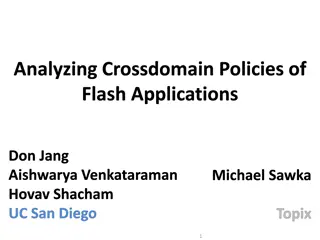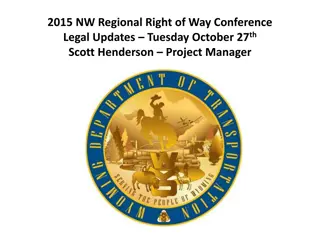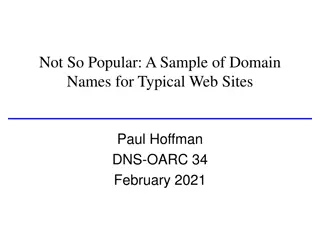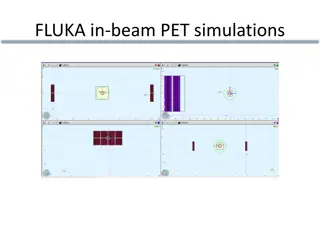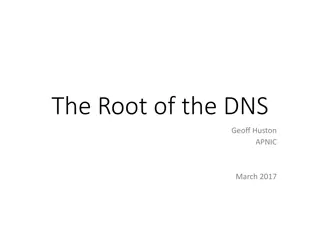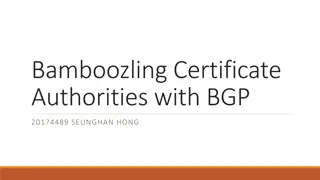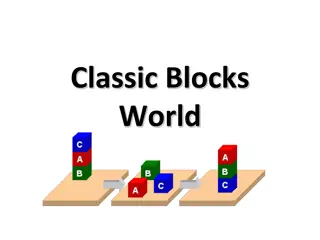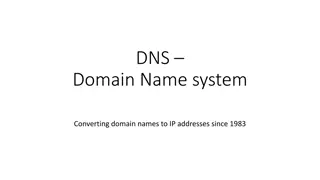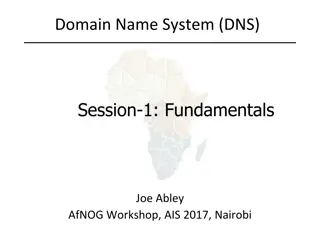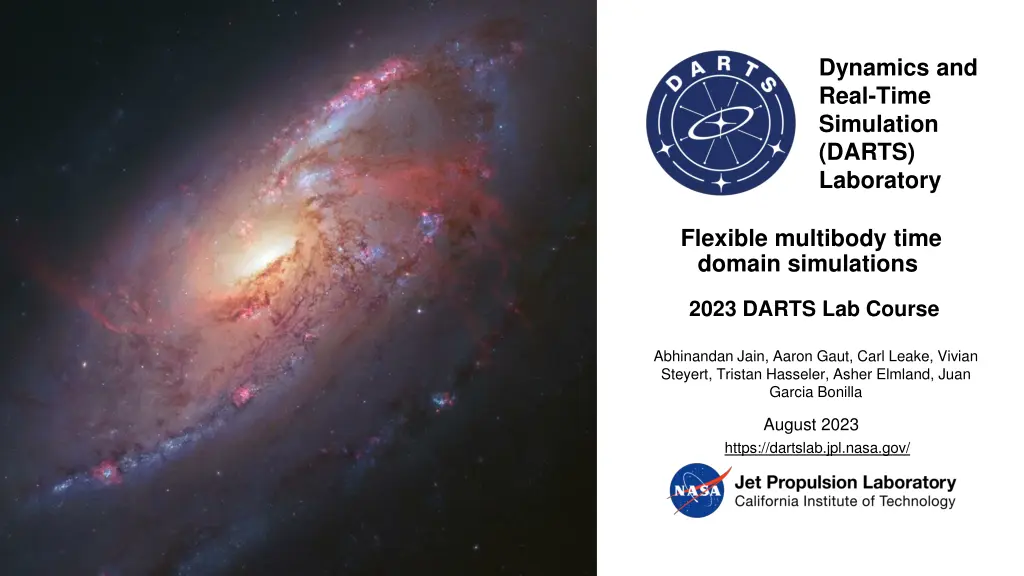
Flexible Multibody Simulations: DARTS Lab Course Overview
"Explore the 2023 DARTS Lab Course focusing on flexible multibody time-domain simulations. Learn about flexible body modeling, connecting bodies, constraints, and more in this comprehensive guide."
Download Presentation

Please find below an Image/Link to download the presentation.
The content on the website is provided AS IS for your information and personal use only. It may not be sold, licensed, or shared on other websites without obtaining consent from the author. If you encounter any issues during the download, it is possible that the publisher has removed the file from their server.
You are allowed to download the files provided on this website for personal or commercial use, subject to the condition that they are used lawfully. All files are the property of their respective owners.
The content on the website is provided AS IS for your information and personal use only. It may not be sold, licensed, or shared on other websites without obtaining consent from the author.
E N D
Presentation Transcript
Dynamics and Real-Time Simulation (DARTS) Laboratory Flexible multibody time domain simulations 2023 DARTS Lab Course Abhinandan Jain, Aaron Gaut, Carl Leake, Vivian Steyert, Tristan Hasseler, Asher Elmland, Juan Garcia Bonilla August 2023 https://dartslab.jpl.nasa.gov/ https://dartslab.jpl.nasa.gov/
Topics overview 1. Introduction 2. Single flexible body modeling 3. FModal FEM/DARTS bridge 4. Flexible multibody systems in DARTS 5. Time domain simulations 6. Recovering system modes with configuration changes 7. Servo-elastic effects 8. Wrap up 2
Overview Flexible multibody time-domain simulations Notebook example 3
Flexible multibody time-domain simulations 4
Summary thus far Thus far we have covered: DARTS flexible body definition and how to create a single DARTS flexible body. How flexible body nodes allow us to connect to other bodies (rigid or flexible). How to use FModal to extract flexible body properties from NASTRAN. How to choose a-set so we get the right mode shapes. Higher-fidelity effects e.g., residual vectors and modal integrals. Some preliminaries on how to assemble multiple flexible bodies into a multibody model. Showcased some simple examples. 5
Connecting flexible bodies together To extend to a simple flexible multibody, one needs to be conscientious of how bodies will connect to other bodies in the simulation. a-set will need be chosen for the joint that connects this body to the parent as well as the nodes that will connect this body to all of its child bodies. Residual vectors automatically encompass whatever is in the a-set, so there are no to-do items there. When building up the DARTS body dictionary, one will need to set inbNodalMatrices appropriately. Just as you would need to set the inbToNodeTransform in the rigid-body case, you need to set both the inbToNodeTransform and inbNodalMatrix if the parent body is a flexible body. 6
Constraints Similar to the single-body case, we can again add in constraints using flexible constraint nodes. This allows one to extend from arbitrary tree-topologies to topologies that include closed loops. These constraints can change at run-time. 8
Flexible multibody time domain simulation F-FlexDynamics/14-BeamSpinUp 9
Using DARTS flexible body dynamics with Dshell 10
Using Dshell for full-up vehicle level simulations For the rigid-body case, we have studied how DARTS provides the multibody dynamics backbone to allow the development and integration of a broad class of actuator, sensor, and environment models to develop full vehicle-level simulations. These simulations can be used stand-alone or in closed-loop with control and autonomy software. So, what do we need to change to use flexible body dynamics with Dshell? Nothing! Dshell models are completely agnostic to whether the nodes and bodies they are using are rigid or flexible! Everything in Dshell carries forward. 11
Dshell flexible body dynamics usage Can proceed to build full-up Dshell vehicle models with actuators, sensors, and environment using rigid-body dynamics in DARTS. Use this for closed-loop simulations. Can have parallel efforts and analyses that focus on using flexible body dynamics to increase the fidelity of the dynamics. These efforts can involve collaboration with G&C analysts to develop modal properties and models that can be used for control system design. Can combine the two paths as needed to have full-up Dshell vehicle models with the flexible body DARTS dynamics model seamlessly dropped in. We will see the use of this case later when studying servo/aero-elastic effects modeling. 12
Summary We have everything we need to build arbitrarily-complex flexible multibody simulations. Using constraints, this includes topologies that have closed loops. We use the fastest available recursive algorithms from Spatial Operator Algebra for rigid/flexible body dynamics. We use minimal coordinate formulation to allow us to use ODEs for simpler formulation and speed. We can attach the bodies however we please and can modify the topology at run-time as we see fit. These multiple bodies can undergo large joint articulation and we can still modify the mass properties of the rigid bodies at run time as well. We cannot arbitrarily modify the mass properties of the flexible bodies though, since the mode shapes are derived for the body with a given mass. Of course, this doesn't prohibit things like a flexible body with rigid lumped mass, where the rigid lumped masses change. No derivation of EoMs or new software needed to cover this configuration space. Interface to Dshell for vehicle-level simulations with actuator, sensor, and environment models remains unchanged. Have full capability to do closed-loop simulations with G&C and autonomy stacks with rigid/flexible body modeling as desired. 13
Thank you for your attention. Any questions? 14

